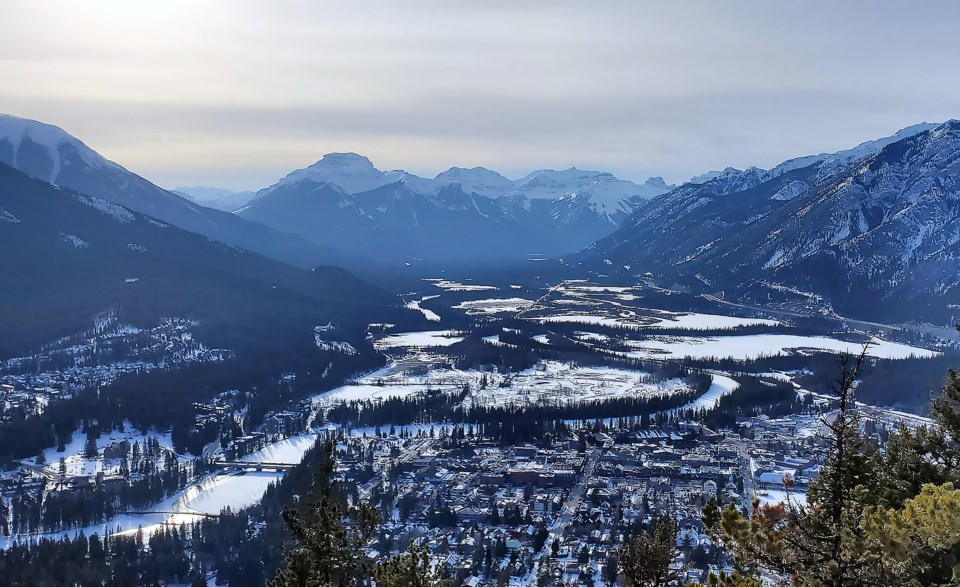My first memory of a traffic backup causing significant delays dates back to 1986. My mom, working at the Banff Springs Hotel, called my dad to make dinner because her friend took almost an hour to get down from the Sulphur Mountain gondola. Traffic is not new to our community.
We’ve all experienced how traffic congestion impacts our quality of life. The noise, delays, and inconvenience extend to broader implications for our environment, our ability to welcome visitors, and our community values. No resident has been unaffected by vehicular traffic, no matter the neighbourhood you live in. Now, we are at a critical juncture because the Town of Banff has implemented all modern traffic management solutions possible, and our road network is at capacity.
The downtown pedestrian zone represents a significant step forward in addressing traffic congestion and enhancing the visitor and resident experience. It reflects how we encourage visitors to travel within Banff and Banff National Park while striving to be a model environmental community. The pedestrian zone aligns with Banff's commitment to environmental stewardship. Residents are proud to care for this special place and increasingly travel through our community carbon-free when possible.
A vote for yes is a vote to continue Banff's journey toward a sustainable and balanced future. It signifies a commitment to collaboration, innovation, and resilience. Conversely, a vote for no undermines our progress and could exacerbate the very problems we aim to solve. Data shows removing the pedestrian zone will likely worsen traffic issues, while a yes vote helps reduce reliance on vehicles in the downtown core.
Vehicle volumes over the Banff Avenue Bridge and on Mountain Avenue have reduced by 17 per cent since 2019. When the pedestrian zone reopened to traffic after Thanksgiving Day weekend last year, vehicles travelling over the bridge immediately increased by 19 per cent. This is known as induced demand. If you are concerned about traffic congestion, I urge you to make a decision based on data because removing the pedestrian zone will not solve traffic issues.
Roam transit is a prime example of our community working together to improve Banff, achieving record ridership of 2.62 million in 2023. Roam removed 3,000 vehicles per day from our streets in July and August, 2023. For a town that reaches road capacity of 24,000 vehicles per day, these gains are significant.
Our community built Roam transit to lessen the impacts of personal vehicles on all our streets. Ideally, we would also implement intercept-parking solutions, enhance parking demand management strategies, and further strengthen Roam. We need visitors to keep our community functioning, but we do not need their vehicles. We now offer frequent transit to all major destinations within Banff and the national park.
Banff has a car problem, not a people problem. Removing the pedestrian zone does nothing to manage visitor numbers. Visitation will continue to increase as the population around us grows. Last year, Alberta added 202,324 residents, the largest annual increase on record. Banff’s high congestion days are driven by day visitors from Calgary and Alberta, not overwhelming international demand.
There are no legislative tools or legal pathways to restrict access to Banff or national park sites on the south side of the bridge. Limiting vehicles entering our town through visitation caps is not a viable solution to meaningfully address the traffic and congestion issues.
National park experiences capture real places, activities, and stories defining Canada. Among residents and businesses, there has never been a stronger alignment to meet the expectations of Canadians and visitors, living up to our community values. The pedestrian zone enriches Banff's core experience, emphasizing its natural beauty and reflecting our leadership in regenerative tourism. It creates a unique energy downtown, where families with young children feel safe, residents enjoy their vibrant community, and visitors feel welcomed.
The pedestrian zone is more than a traffic solution: it’s a vision for a more vibrant, sustainable, and community-focused Banff. By limiting vehicle access to the downtown core, we not only reduce congestion but also create a safer, more enjoyable space for residents and visitors alike. We are blessed to have so many local owners and operators in Banff, this is not typical for resort communities. This initiative supports local businesses by making the downtown area more accessible and appealing to foot traffic, which in turn fosters a stronger sense of community and connection with visitors.
By voting yes, we affirm our commitment to innovation in addressing the challenges of modern tourism and urban living. We acknowledge while the pedestrian zone is not a panacea, it is a significant step in the right direction. It’s an opportunity to build on our successes, learn from our experiences, and continue evolving in a way that honours our community’s values and vision for the future. The path forward requires we reject the divisive politics that defined Banff in the 1990s and move forward with the conviction that we all value this special place, and no resident, business or conservationist wishes to dimmish this community or the surrounding ecosystem. We are all stewards.
The decision to maintain the pedestrian zone is a crucial one for Banff. It represents our collective dedication to sustainability, quality of life, and the harmonious coexistence of residents, conservationists, businesses, and visitors. Let’s seize this opportunity to enhance our community and ensure Banff remains a beacon of responsible tourism and environmental stewardship into the future.
Join me and many other Banffites on Aug. 12 in voting yes to continue supporting Banff’s evolution, putting people and the environment at the heart of our community.
Stavros Karlos was a Banff town councillor from 2007-17. He is the former co-chair of the Bow Valley Regional Transit Services Commission and is the current chair of Banff's Municipal Planning Commission.




